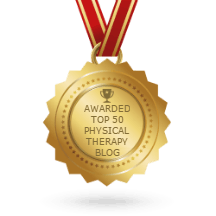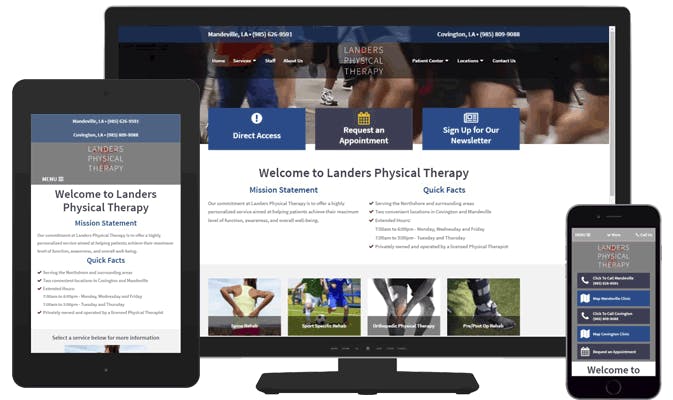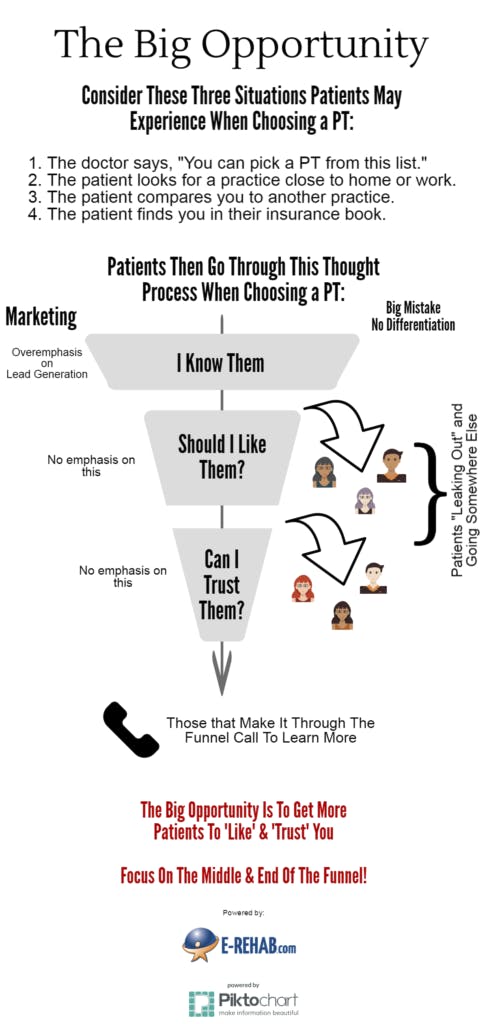Physical therapy website design is a great opportunity for a private practice to differentiate themselves from the competition. If you run a physical therapy clinic, you know who your competitors are, and you know what makes you different from them. So, how do you convey what makes you different from the rest when crafting a physical therapy website design?
Astute branding choices, plus specific attention to SEO, so you’re found easier online, is the right strategic formula. Additionally, you need a site that is patient friendly, loads fast, offers the right information to your viewers (i.e. services and specialties), and has clear calls to action throughout. Of course, you want your website to work well on not only desktop computers but tablets and smartphones too (this is called a responsive website and you can read more about what that means by clicking here).
Here at E-rehab.com, we’re an experienced team that gets your business there, step by step.
Branding in Your PT Practice Web Design
Your physical therapy practice needs to demonstrate how it stands apart from others. While it’s important to use quality images, graphics, and a consistent color palette to make a statement, branding should also be about the information you share with your prospective patients. Here are some ways you can differentiate your practice:
- Share innovative physical therapy techniques others don’t offer?
- List special credentials and the benefits of seeing a PT that has them (perhaps you have and OCS and/or doctoral degree)
- Do your outcomes set you apart? If so, list them. FOTO has a widget for that. Ask for the code and we can include it.
- Do you have a unique physical location?
- Do you treat/touch every patient every visit? While it’s getting harder to do so with declining payment, this is a good differentiator and something the big box clinics don’t do much of anymore.
Include Your Own Physical Therapy Images & Video – Images and Video are Everywhere and You Should Leverage This Too
In the age of visuals, providing videos on your website that showcase what you offer, is a great method of branding. Don’t just do a video about a treatment technique, create a series of videos on the conditions you treat, why physical therapy is a great choice, and then why someone should choose you.
Patient Video Testimonials and Social Proof
Also, patient testimonials are one of the best methods of branding for websites. Real results are everything when it comes to patients choosing physical therapy, and they’ll hear it directly from your best cases. This is called social proof. Here’s what social proof means:
…often in situations where we are uncertain about what to do (i.e. I don’t know which physical therapist I should choose), we would assume that the people around us (experts, celebrities, friends, patients.) have more knowledge about what’s going on and what should be done. Reference: https://blog.bufferapp.com/social-proof
Effective SEO
Your website should be optimized not only for your brand name but also for the keywords “physical therapy + city your business is in”, so those in your local area find you easier on search engines.
It’s also important to include appropriate titles, include keywords, and alt tags for your images and videos, so the search engines have a better idea of who you are and where your business is located.
While keywords in text are still important, be careful in being too general. Developing unique long-tail keywords pertaining to specialized physical therapy procedures you provide, will help you get found easier too.
Easy Integration with Social Media
Integrating a website with social media is essential in order to provide content about the physical therapy services you offer. You can do this by creating social media buttons that link to your social properties as well as easy shares on your web pages, blog, and videos.
Creating educational information on your site for social media sharing is important to alert your followers about services and specials you offer. The more detail you include in your content, the more apt it is that visitors will share. Just be sure the content you create for social media is information not found anywhere else. You want to get all the “juice” you can which will help with your search engine rankings.
Customizing Your Site for Mobile
Responsive design for mobile devices is more essential than ever for your physical therapy site. As more and more people use mobile devices to look up information (statistics indicate that approximately 35% of PT website viewers are using mobile devices now), your site needs to be optimized for mobile platforms as well. If you aren’t sure if your current website is mobile optimized, we recommend you check it out here: https://search.google.com/test/mobile-friendly
15+ Years of Experience – We’ve Got You Covered
We’ll help make your site easy to use so those searching for you will find exactly what they need and fast. This means possibly restructuring the desktop version of your site, so the most essential information gets seen first.
Stand out and show prospective patients that you’re there to help. Contact us here at E-rehab.com, so we can create a unique website for your physical therapy practice.









